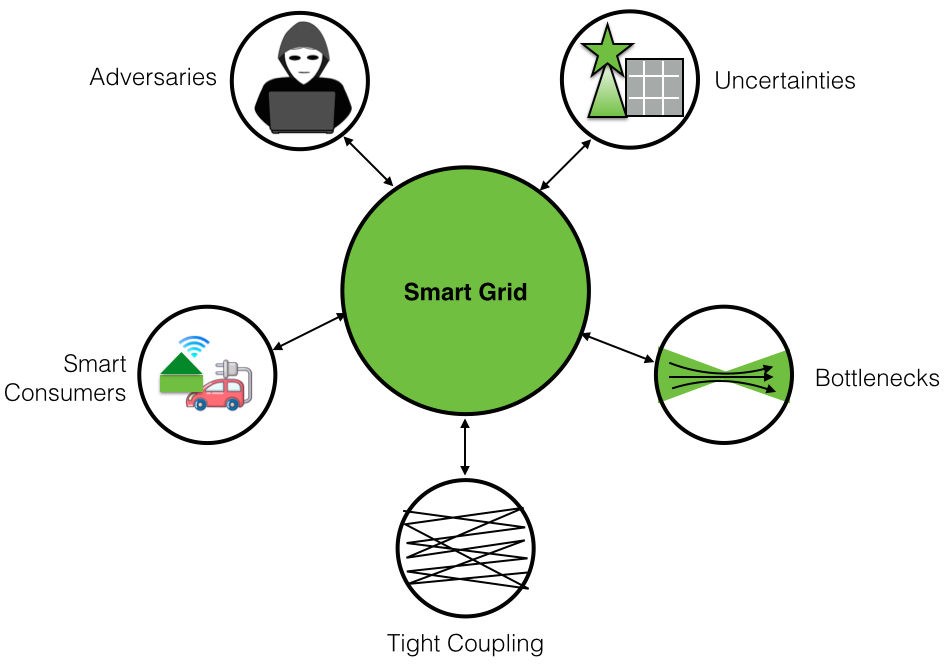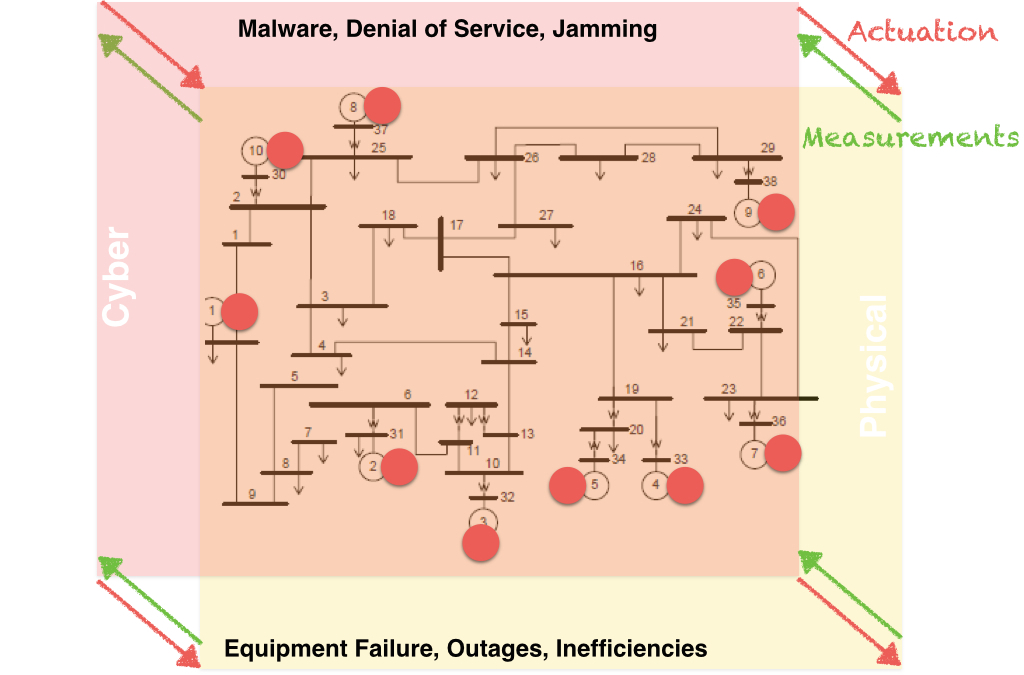
The modern power grid is undergoing unprecedented levels of transformation. As such, two major trends can be observed. First is the confluence of information and communication technologies (ICTs) with the physical power grid components (e.g. advanced metering infrastructure (AMI), phasor measurement units (PMUs), data concentrators, etc.), which is rendering real-time monitoring and control operations a practical reality. Second is the rising prevalence of diverse power components such as renewable generation sources, storage systems, flexible consumer appliances and smart protection devices that have the potential to increase sustainability and resilience in the grid. These also introduce interesting open challenges, specifically in the areas of power system security and efficiency. The RISE lab strives to overcome these issues by leveraging on optimization, statistical analysis and machine learning constructs which are fundamental in the broad field of artificial intelligence (AI) to address open research problems in three specific areas: grid security assessment, adversarial attacks on the smart grid and preventive/reactive mitigation. These research efforts strive to empower individual cyber-enabled power entities with the ability to effectively infer, predict and respond to adversarial/natural perturbations in the system.



